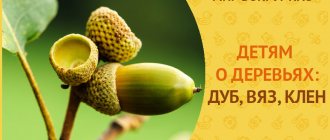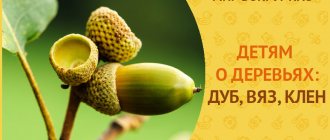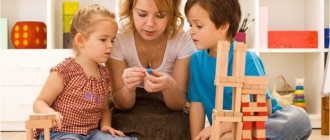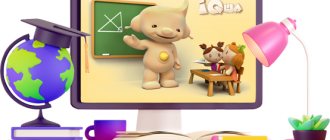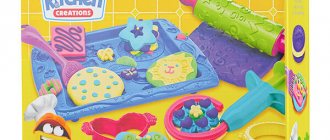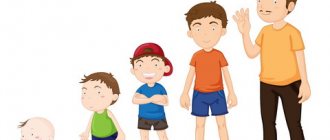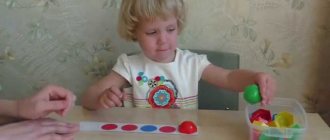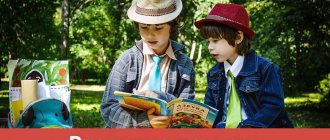The opinion that school will teach a child everything that a literate person should know and be able to do is no longer relevant for a long time.
If earlier parents believed that preparing for school deprives the child of childhood, now the majority tries to send the preschooler to preparation centers or study with him independently.
The question of how to prepare a child for school at home worries many parents.
What should a child entering first grade know?
It often happens that parents, when preparing their child for school, focus on one thing and neglect other aspects of development. Below is an approximate list of knowledge that a 6-7 year old child should have when entering school:
- own surname, first name and patronymic, surname, first name and patronymic of parents, home address, country and city of residence;
- your birthday and the birthdays of your parents;
- days of the week, months, seasons;
- names of common animals and plants;
- primary colors;
- basics of traffic rules;
- professions, sports, names of famous poets and writers;
- major holidays;
- “right” - “left”, “more” - “less”, “older” - “younger”, “long” - “short” and so on;
- how do bodies of water differ (do not confuse rivers with seas);
- what is the difference between shrubs and trees, vegetables and fruits from berries;
- how do sounds differ from letters, vowels from consonants;
- solve simple problems;
- solve logical riddles;
- restore sequence, find similarities and differences in pictures;
- describe the image, retell stories;
- know short poems;
- count to 10 and perform simple arithmetic operations;
- read small sentences (4-5 words), understand what you read;
- cut geometric shapes with scissors;
- draw straight lines without a ruler, hatch without going beyond the outline.
Exercise “The fourth is extra” - name the extra one and explain your choice.
Swallow, wolf, hare, cat (an extra swallow, because it is a bird, and the rest are animals) Starling, dog, cuckoo, nightingale. Sparrow, dove, crane, tit. Rook, swan, duck, crow. “Who are there many in the forest?” There are many starlings in the forest (swallow, nightingale, stork, rook, crane, cuckoo, heron, swift) “Count to 5.” One swallow, two swallows, ...... five swallows. (cuckoo, starling, nightingale, stork, rook, crane, heron) “Name the chicks.” rook - rook... duck -... cuckoo -... starling -
Learn a poem about birds with your child. Do finger exercises with him. (when naming a bird, bend your fingers). A flock of birds Sing, sing, sing along, ten birds - a flock. This bird is a nightingale, this bird is a sparrow. This bird is an owl, a sleepy little head. This bird is a waxwing, this bird is a corncrake. This bird is a little gray feather. This one is a finch, this one is a swift, this one is a cheerful siskin. Well, this is an evil eagle. Birds, birds, go home! Clench your fingers into fists
Top
Tasks and games in various subjects
When preparing a child for school, parents should remember several important points:
- Classes should be conducted exclusively in a playful way. Forcing a child to study, yell at him, much less punish or beat him is unacceptable. The task of parents is to interest the child, only then will he be successful in life and win respect among friends.
- The duration of the lesson should not exceed 15 minutes; there must be a break of 20 minutes between lessons.
- Subjects should be alternated - reading with drawing, mathematics with physical education, and so on. Prolonged mental stress has a bad effect on the condition of a growing organism.
- The complexity of the material should be increased gradually; there is no need to rush with new tasks.
- It is recommended to use colorful manuals; reading texts should be interesting.
- Help your child, explain what is not clear, read good fairy tales.
Math lessons
It is advisable to teach your child to count using familiar objects – candy, toys. A little later, you can switch to counting sticks or special cards.
It is very useful to study numbers in pairs, for example, 5 apples and 1 apple, together there will be 6 apples. One such pair needs to be studied for a whole lesson, and at the beginning of the next lesson, you need to repeat the material covered, and then move on to the next pair of numbers.
geometric shapes using cookies as an example - round, square, and triangular cookies can easily be found in stores.
When the child remembers the shapes and names of the main figures, you can move on to drawing them using a ruler.
Reference! Alternation will bring more benefit - today counting, tomorrow - geometry, the day after tomorrow - solving simple examples.
Math games:
- Draw 2 houses of 3 floors, shade the windows in some of the windows of one house, and tell the child that people live in these apartments. The task is to move the same number of people into another house.
- Download number pictures in which you need to connect the numbers in the correct order with lines to make a picture.
- Draw geometric shapes and ask the child to come up with what they can be turned into. For example, a circle - a sun, several triangles - a herringbone, and so on.
Letter
Helpful Tips:
- First you need to train the child’s hand - without this, children will not be able to practice writing for a long time,
- Develop fine motor skills - let the child sort cereals (beans, pasta), do modeling,
- Cutting out various shapes with scissors prepares your hand well for writing.
First you need to teach your child to write block letters , and only when the entire alphabet has been completed can you move on to capital letters.
It is necessary to explain to the child that you need to write carefully and you cannot go beyond the stripes or squares. Of course, the handle should be comfortable, and the child should hold it correctly.
Writing assignments:
- Draw a labyrinth and let the child use a pen to draw a path out of it so that, say, the little bunny finds its mother.
- Draw a simple picture, for example, a bouquet of flowers, and let the child complete the vase for it.
These exercises will help your child learn to hold a pen more confidently.
Reading
The sooner a child learns to read, the easier it will be for him to master all other subjects.
Letters need to be learned alphabetically. They can be drawn, sculpted from plasticine, and parents must come up with an association for each letter. For example, the letter O looks like glasses, J - like a beetle, and D - like a house. If possible, you can show the letters using your fingers or torso.
After the child has learned a few letters, read a short text to him and ask him to look for letters he knows in it.
Be sure to ask what the text you read was about, ask to retell it, ask a few questions about the text.
Tasks:
- Look for a familiar word in a short text. Moreover, this needs to be done in 1 minute.
- Ask your child to read first loudly, then quietly, then silently. At the same time, you need to make sure that the pace of reading does not change. Ask your child to read without opening his teeth. After reading, the child must retell the text.
- In 30 seconds, invite the child to write as many vowels as possible, first, then consonants.
- Write the syllables on the cards and the child will make words from them.
- Play “changeling” - show your child how “cat” can turn into “current”, and “call” into “cart”.
- Write down as many words as familiar to the child and skip them one letter at a time. The child will insert them.
- Teach your child to read at speed. To visualize the improvement in speed, you can use an hourglass.
Creation
Teach your child to use markers, paints and a brush. Teach your child to shade a limited area without going beyond the boundaries. Coloring books with large and then small details will help with this.
While drawing or modeling, you can study other objects, for example, let the child make letters, or while drawing, find geometric shapes - a house is a square, its roof is a triangle, and a ball is a circle.
How to prepare for school with... your body
If you really want to walk through a children's preschool program, try to do it in the style of a science laboratory. Only with the body can a child fully understand and experience the world around him. Therefore, whenever possible, work with living objects, and not with pictures and electronic “talkers”.
How to compare items
A classic task for those entering first grade is to compare similar objects. Compare an apple and a pear. Compare watermelon and pumpkin. Compare birch and spruce.
You go to the store and buy a pear and an apple. Bring it home and put it on the table. Let your colleague describe in detail and meticulously the appearance of these fruits, touch the skin, and weigh it on his hand.
Cut the fruit and taste it. Evaluate not only the acidity and sweetness, but also the graininess of the pear on the tongue, the hardness of the apple, and the smell. Then get it all down on paper.
Do the same with the pumpkin and watermelon, and then go to the park and examine two different trees - even if it takes half an hour to get to the forest by bus, this is one time you can spend time on such an important academic task.
If you want to list ten African animals, go to the zoo or the circus. One such exercise will be more beneficial than systematic daily cramming of these standard comparisons.
How to study the composition of numbers
Mathematics is comprehended by the body. Take twenty identical-sized beads, buttons or stones. Place one object in the child's palm and let it squish in his hand. Then - two, then - five.
Then play like this: quickly take a handful of objects, then put them in the child’s palm and ask: how many? Let him touch, weigh, let him feel with his body how two differs from five.
Then let me touch twenty - it will be a microshock. And if you can show or draw a thousand of the same elements on a piece of whatman paper, the child will take the first step towards never getting confused in the ranks. Once you feel this difference physically, you will never forget how different a thousand is from a ten.
Olga Naumova “Learning to compare”
Preschool children often have difficulty making comparisons. The ability to compare is one of the most important mental operations, which is based on developed speech, logic and observation. Therefore, it is extremely important from early childhood to stimulate the development of logical thinking, attention, and observation in children. Along with these skills, the child’s speech develops and his vocabulary is enriched.
Download the book by O. Naumov “Learning to Compare”
How to develop a child's speech before school
It is difficult to imagine the development of speech without dialogue. But here’s the strange thing: we practically never have a dialogue with our children. Did you eat? Yes. Do you want to sleep? No. Did you break the cup? I.
All this is not a dialogue, but an interrogation. The parent asks questions that cannot “hook” the child. Therefore, the child’s speech becomes monosyllabic and colorless. The fact that children mutter to themselves while swinging on a swing or wandering around the garden is many times brighter.
Open questions
You need to train your child’s speech through emotions. Try to make a list of questions that will evoke an emotional response in your child, and try to discuss them in free moments - on the way to the clinic, before bed, while preparing breakfast.
For example:
- If Spider-Man suddenly wandered into our apartment, what would you do? Where would you take him, what would you show him? What would you treat him with - not flies?
- Imagine that your room will be renovated. What color would you like to paint the walls? What about the ceiling? What kind of furniture would you put in? Shall we draw it all? Ask me what I think about the black walls in my room.
- You say you want to become a veterinarian. Can you tell us what your working day will be like? What will you do first, what will you do next? How can you help such a patient? Imagine a giraffe comes to your clinic... What hurts?
What will you choose – and why?
Another very useful game at the intersection of meaning and emotions: it develops not only thinking and speech, but also the ability to feel and set boundaries. Ask your child: this or that? Do you choose porridge or cereal? Summer in the country or summer in the city? Bicycle or scooter? Read fairy tales or read comics? Is there soup, then a cutlet, or a cutlet, then soup?
And always ask the next question - why. Tell me why soup first is just more common? Why is it suddenly summer in the city?
Try not to talk to your child or offer him options until he falls into obvious stupor. Sometimes it takes us a while to understand why we chose cherries instead of strawberries or a smoothie instead of ice cream. But then it turns out that this is where our personality shows itself - our taste, memories, unique associative series.
When the child is mature, let him ask you. This game, so simple at first glance, is very exciting. My children and I have been playing it for many years now, and we never get bored, because both we and our interests change. And, of course, you can develop your speech only when you talk about what is close to you.
Olga Naumova “Logic”
The ability to think logically and reason is necessary for a child to successfully study at school - otherwise he may face difficulties in mastering basic subjects. This manual contains exercises that will help a future first-grader master basic skills - recognize objects by given characteristics, compare and find common and distinctive features, generalize, determine patterns and sequence of events, and solve simple logical problems.

